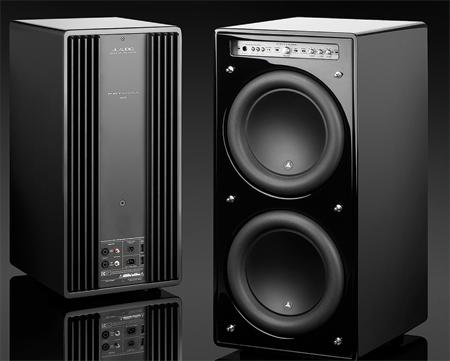Benefit Of Using Multiple Subs

Our custom Installer John Sciacca reached out to subwoofer manufacturers and asked their tips for getting the most bass out of discreet installs, here's what they had to say about using multiple subs:
Contrary to what you might think, it’s not about getting louder bass. “Multiple subs help even out the bass response over a larger seating area,” explained THX’s John Dahl. “A secondary effect is to help reduce the excessively long decay times of the prominent modal frequencies.”
Eric Harper (Sunfire) noted, “Multiple subs provide better performance and yield flatter response.”
Al Baron (Polk) added that having “two or more woofers dramatically reduces standing waves as well as providing better bass at all listening levels.” The bass benefits can be especially true when décor concerns force you into using a less than optimal location for the first sub.
The most vocal multiple-sub advocate was Carl Kennedy from JL Audio. “I’m rabid about using a pair of subs at a minimum. In fact, I’ll often talk people out of using a sub at all until they can afford to get two.”
He used a terrific analogy of an A/C window unit versus central air. The window unit (single sub) will deliver blasts of cool air at one spot, with little at others.
When it comes to bass, the goal is smooth and even at all listening locations. But if placing one sub is tricky, you might think two would be twice as hard. Harper recommended “positions on the front wall and sidewall, with varying distances from room corners to reduce probability of compounding response problems.”
Velodyne’s Joe Finn commented, “A second sub in a different location enhances the odds of getting great bass, [especially with] in-wall or other concealed subs. One caveat: Spending the same amount of money on two subs that are half the price of one good one is unlikely to result in great bass.”
“The best solution,” Dahl said, “involves placing multiple subs all running from a single/mono sub output at locations where they work in unison to drive highamplitude bass modes out of phase. The greatest effect comes when you place two subs, one each at the opposite ends of a first harmonic modal dip: for example, one sub halfway along the front wall and the other halfway along the back wall. This works best in an acoustically symmetrical room.”
BG Radia’s Chris Brunhaver explained, “By using multiple subwoofers, we can greatly increase the [room’s] modal density, largely filling in the peaks and dips, giving a smooth, articulate bass sound. This improves the overall consistency of bass response from seat to seat.”
Since in-wall subs have to be shallow to fit into standard stud-wall cavities, they generally have limits on enclosure volume, woofer size, and excursion. In turn, their output is limited compared with freestanding models.
“As such,” Brunhaver said, “to get the output where it needs to be, use multiple subs. Thankfully, it’s much easier to use multiple in-walls than trying to hide freestanding units.”
Flabby, bloated, boomy, or anemicsounding bass does a lot to hinder audio performance. By choosing the right sub(s) and putting it (them) in the correct place, your system will perform to its potential.
-- John Sciacca
- Log in or register to post comments





























































